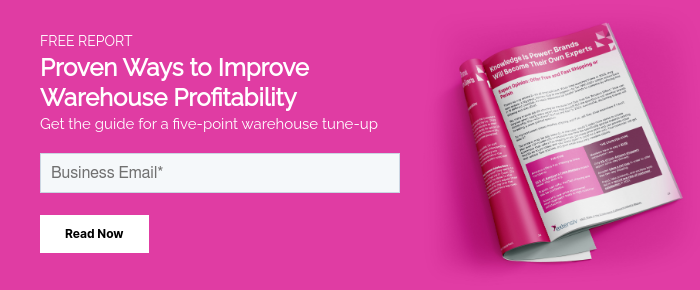When Implementing WMS Technology
Change is hard.
Many people shrink away at the thought of change. There’s even an adage, “if it ain’t broke, don’t fix it.” While staying the same might be fine for some things, how can people or businesses grow, change, or learn by just doing the same thing every day?
During the past year, we’ve all had to learn a bit about adapting to change. In fact, for many third-party logistics (3PL) warehouses, this past year brought tremendous growth and opportunity—but this also brought challenges of scaling and meeting consumer demand to light.
With peak season right around the corner and with the prospect of even greater opportunities, many 3PLs need to consider changes to their technology and software to better meet the needs of their warehouse customers.
How 3PL Warehouses Can Implement Change Management Best Practices
Many third-party logistics (3PL) warehouses underestimate the need for change management, especially when implementing new technology. Implementing a warehouse management system (WMS) is one of the biggest and most important changes a warehouse can undertake. That’s why it is critical to incorporate the recommendations below if you want to successfully install and adopt a piece of technology across the warehouse.
Identify a clear owner. Although the WMS will benefit many parts of the business, having a clear internal owner and advocates across different parts of the business will prove critical to success.
Seek feedback from the nay-sayers. When adopting new technology for the warehouse, there will always be team members resistant to change. Allow them to voice their concerns upfront, but ensure they understand that adopting new technology will prove critical to their success and the company’s success. In fact, many warehouses like to have one “nay-sayer” involved in the WMS implementation. They can help identify concerns quickly, which will allow you to find ways to overcome those concerns promptly. Also, when employees see one of their peers embrace the solution, they will be more likely to embrace it as well.
Identify key performance indicators (KPIs) to improve. Team members may show reluctance to change when they don’t understand the why behind the change. Start with identifying where you need improvements (e.g., pick accuracy, productivity, time to pick, inventory accuracy) and seek quantifiable improvement goals for these areas. Once people understand the desired outcomes, they will more likely embrace the changes required of them to meet the new goals.
Create a project plan. Make sure you have key tasks, project milestones, expectations, owners, and assigned dates clearly documented in a project plan so that you can effectively manage the implementation WMS software implementations often fall apart when teams don’t know the expectations or aren’t held responsible to complete the milestones. Each key stakeholder should bear some ownership of the plan so that they can embrace the technology along the way, instead of having it dropped in their lap without prior involvement.
Build a communication plan. People fear what they don’t know. By communicating early and often, employees will feel like part of the solution and will have time to learn and understand what you want to achieve with the WMS. Make sure to paint a picture of what success looks like. Employees often feel like technology will disrupt or replace their jobs, which results in fear. By speaking to employees about the benefits of technology and how it can help advance their careers, make their jobs easier, and allow for more future growth, warehouses can turn a fearful situation into a positive one.
Do a soft launch. Your WMS implementation just completed and now you want to roll it out. Great! Consider a testing phase where your team members know that they can provide feedback and still help work out any kinks. Have a daily standup session to get feedback so that you can help people understand the right workflows or answer any questions. Once you’ve tested it with your team and overcome any initial hiccups, you can expect a much smoother launch.
Best Practices You Can Follow
Change is hard…but you can make it easier following the simple steps outlined in the checklist below.
Change Management Best Practices Checklist:
- Assign an internal project manager.
- Seek feedback from unconvinced team members.
- Assemble the implementation team.
- Build a project and communication plan.
- Identify users of the system and what permissions will be needed.
- Identify key KPIs to measure for return on investment.
- Consider a soft launch to allow for calibration before full launch.
To learn more about how your 3PL warehouse can implement new technology and prepare for change, download our guide to evaluating warehouse management software.

-
You’ll read about:
Be the first to know
Subscribe to our newsletter








